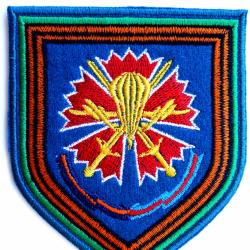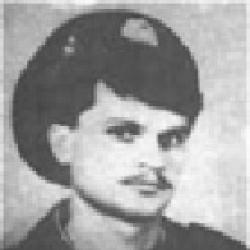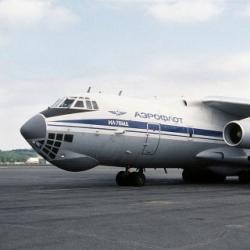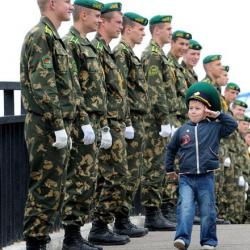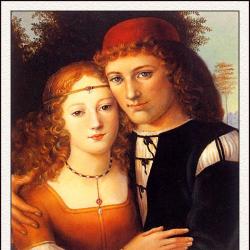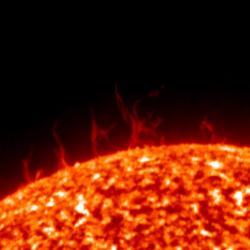Presentation on the history of the Second World War, meaning and results. Presentation - reasons, cost and meaning of a great victory. Reasons for the victory of the USSR in the Great Patriotic War
Description of the presentation by individual slides:
1 slide
Slide description:
2 slide

Slide description:
The Great Patriotic War of 1941-1945 - the war of the Union of Soviet Socialist Republics against Nazi Germany and its European allies (Hungary, Italy, Romania, Slovakia, Finland, Croatia) who invaded Soviet territory. The most important component of the Second World War, which ended with the victory of the Red Army and the unconditional surrender of the German armed forces.
3 slide

Slide description:
The Great Patriotic War ended with the complete military-political, economic and ideological victory of the Soviet Union, predetermining the outcome of the Second World War as a whole. The main positive result of the war was the winning of freedom. The defeat of Nazi Germany A barrier to world domination: The German-Italian-Japanese fascist-militarist bloc, striving to achieve world domination, was the instigator of the war. He continuously expanded his aggression, and the main obstacle to the implementation of these plans was the Soviet Union. Hitler was in a hurry to put an end to the Soviet Union, therefore, even during the preparation of the attack and on December 17, 1940, he indicated: “In 1941, we must solve all continental European problems, since after 1942 the United States will be ready to enter the war.”
4 slide

Slide description:
Former US Secretary of State Edward Stettinius emphasized: “If the Soviet Union had not been able to hold its front, the Germans would have had the opportunity to capture Great Britain. They could also take over Africa, in which case they would be able to establish a foothold in Latin America.” Predictions for how long Russia would last were “one to three months.” Already on July 4, 1941, Hitler’s statement was quoted: “I always try to put myself in the position of an enemy. In fact, he has already lost the war.” In the event of the defeat of the Soviet Union, the occupied countries of Europe would be deprived of their last chance for liberation from the invaders.
5 slide

Slide description:
The defeat of Nazi Germany was the result of the efforts of many countries, but the main contribution to the victory was made by the peoples of the Soviet Union. They paid the highest price for it. On January 1, 1941, the population of the USSR numbered 196.6 million people, and at the beginning of 1946 - 167 million. According to official data, the war claimed more than 27 million lives. This is 40 times more than the losses of Britain and 70 times more than the USA. The number of dead Soviet military personnel was enormous - 14.7 million soldiers and commanders. The German armed forces lost 2.9 million on the Soviet-German front. The ratio is determined to be approximately 5 to 1, not in favor of the Soviet Army. The strategic successes were based on millions of lives of soldiers and officers who achieved victory over the enemy. Their death for their homeland evokes a respectful feeling, but in the light of the given figures it is impossible not to point out the reasons for this situation.
6 slide

Slide description:
Most historians consider the main reason not so much the professional superiority of the German soldier as the incompetence of the Supreme Command of the Armed Forces of the Soviet Union. The senior leadership perceived the soldiers as “cannon fodder.” In their opinion, the main purpose of a fighter is to die for the Motherland. The words “take without regard for losses” sounded like the refrain of most orders given from above. The reason for the large losses was also poor preparation of reinforcements, when untrained soldiers were sent into battle. Therefore, successes at the front were achieved at the cost of a huge number of soldiers’ lives, each of which had its own fate. Among the reasons for the victory of the Soviet people in the Great Patriotic War, the following can be cited: the enormous mobilization abilities of the USSR (population and resources); the heroism of the troops and home front workers; the ability of a social system to act in an extreme situation, concentrating all forces to achieve a goal; the rise of patriotism, vast spaces and climatic conditions unusual for the Germans, the help of the allies.
7 slide

Slide description:
The historical significance of the USSR in World War II lies in the fact that it played the role of the main military-political force that predetermined the victorious course of the war and protected the peoples of the world from enslavement. The peoples of the Soviet Union were able to thwart the German plans for a lightning war in 1941, stopping the Nazis’ victorious march across Europe. The counteroffensive near Moscow destroyed the myth of the invincibility of the Wehrmacht, contributing to the rise of the Resistance movement and strengthening the anti-Hitler coalition. The defeats inflicted on Germany at Stalingrad and Kursk became a radical turning point in the war, forcing the countries of the aggressive bloc to abandon the offensive strategy. The crossing of the Dnieper by Red Army soldiers opened the way to the liberation of Europe. Having liberated Eastern Europe, the USSR returned statehood to the enslaved peoples, restoring historically just borders.
8 slide

Slide description:
On the Soviet-German front, the main forces of the aggressor coalition were destroyed - 607 divisions, while the Anglo-American troops defeated 176 enemy divisions. About 77% of all Wehrmacht losses in World War II were on the Eastern Front. The Soviet-German front was the largest in length of all the fronts of World War II. As a result of the war, a new balance of forces emerged in international relations. Although the USSR suffered great material and human losses, it significantly strengthened its political position in the world. By the end of the war, the Soviet Union had the world's largest land army and enormous industrial potential. In addition, the economic and political power of the United States has increased. The rivalry between the two superstates became the theme of international relations for the next 45 years.
Slide 9

Class: 10
Presentation for the lesson





























 Back forward
Back forward
Attention! Slide previews are for informational purposes only and may not represent all the features of the presentation. If you are interested in this work, please download the full version.
Lesson type– a lesson in learning new material.
Lesson form– a combined lesson with computer support in an interactive learning system.
Teaching methods: methods of critical thinking, heuristic, partial search, reproductive, research, case stage.
Forms of organizing educational activities: group, frontal, individual.
Interdisciplinary connections: geography, local history, general history, computer science.
The purpose of the lesson– developing students’ understanding of the main events of the final stage of the Great Patriotic War and the Second World War and the role of the USSR in this period.
Tasks:
Educational:
- Give an idea of the military-political situation in Europe in 1944-1945;
- Introduce the dates of the main historical events of the final period of the war: June-August 1944, February 1945, April-May 1945, May 8, 1945;
- Introduce the concepts of “cauldron”, capitulation, “10 Stalinist blows”, denazification, demilitarization;
- Determine the sources and reasons for the victory of the Soviet people in the Great Patriotic War;
- Find out the significance of the subjective reasons for victory: the role of Stalin, military leaders, the courage of soldiers, the fortitude of home front workers.
Develop and form students’ skills and abilities:
- Consciously organize and regulate educational activities;
- Work with a historical map, with interactive resources (tasks, maps, diagrams, etc.);
- Analyze and summarize facts; create a summary table;
- Build logical reasoning using the establishment of cause-and-effect relationships;
- Work with a historical map and an interactive map;
- Perform logical thinking operations (analysis, synthesis, generalization, comparison, specification) when working with historical documents, illustrative material, video material.
Educational:
- Develop a sense of patriotism and pride in the feat of the Soviet people;
- To bring students to an understanding of the reasons for the victory of the Soviet people in World War II;
- Be aware of your identity as citizens of the country; master humanistic values and traditions of society.
1. Organizational stage.
Mutual greeting between students and teacher; recording absences, checking students' readiness for the lesson. Students are divided into 4 groups, their task at this stage is to fill out Self-Assessment Sheets and select a group leader . Annex 1.
2. Updating knowledge. Repetition.
Groups receive different tasks that help them repeat their knowledge of the past stages of the Great Patriotic War. Appendix 2
- Group 1 – task to correlate dates and events.
- Group 2 – to define terms.
- Group 3 – working with battle maps.
- Group 4 – work with sources (determination of a military operation or event).
After completing the task, each group shows their results . All tasks are broadcast on the interactive board. The assignments were completed in the SmartNotebook program.
3. Motivational stage.
The method used as motivation case stage. The teacher reads a fragment from “Alpine Ballad” by V. Bykov: a scene of a conversation between two prisoners - a Russian soldier and an Italian girl. This scene can be prepared in advance and then two students will present it. Appendix 3
After getting acquainted with the “case story,” the teacher asks a number of questions to the students:
- How did this scene make you feel?
- Why doesn't the girl believe in Victory?
- What does she hear in response from the Russian soldier?
Lesson assignment: prove the Soviet soldier’s phrase that Russia will “crush” Hitler.
Teacher: We know that the USSR, during the period of “radical change,” went on the offensive. However, Germany was still a strong and combat-ready country. Today we have to study the final stage of the Second World War. We have to study the main events of this period, show the role of the USSR in the Victory over Germany. And only then will we be able to prove or disprove the words of the Soviet soldier.
The students are given the goal and objectives of the lesson - to characterize the main events of the final stage of the war, as well as to determine the cost of the USSR Victory in World War II.
4. Studying new material.
Work in groups. Each group receives its own task. The content of the tasks corresponds to the main events of the final stage of the war. Students are asked to solve these questions in different forms and using different methods. Appendix 4
1st group: Analysis of the military-strategic situation and defense capability of the USSR by the beginning of 1944. The group is asked to work with graphs and tables, based on which they must draw conclusions.
Group 2:“10 Stalinist blows.” Students are offered a text with the listed military operations included in the history of the war as “Stalin’s 10 strikes.” The group's task is to mark these operations on the map.
Group 3:“Crimean and Potsdam Conferences”. To solve this question, students work with the text in their textbooks and fill out a summary table where they compare these conferences.
4 group: “War with Japan.” Students in this group are given the task of writing the story of one medal. They were offered the medal “For the Liberation of Japan” (from the school museum) as an exhibit. Using text from the textbook, they should briefly explain the history of this medal.
Upon completion of tasks, each group presents their results. The tasks are broadcast on the interactive board. Students show their solutions and draw conclusions.
They appear in the following order:
- 1 group talks about the readiness and state of the USSR at the final stage of the war.
- 2nd group notes on the interactive map “10 Stalinist strikes.”
- 3 group talks about the decisions of the Crimean and Potsdam conferences.
During the consideration of this topic, attention is focused on the participation of fellow countrymen in the operations of the final stage of the Great Patriotic War. For example, student presentation his research work“My great-grandfather fought for me to be born.” The student talks about his great-grandfather, a tanker who took part in the events of 1944–1945, and also took part in the liberation of Europe (Poland, Czechoslovakia). Students are shown a letter, photographs of the war years, and a film about their great-grandfather.
Based on the memories of the student's great-grandfather, students will learn about the main stages and battles during the liberation of Europe from the primary source. Students realize that their families are contributing to the Great Cause of Victory.
Watch the video “Berlin Operation”. ( )
Before watching the film, students are asked a problematic question: “Why is the Berlin operation considered one of the most difficult operations in the war?” Additional questions for the film:
- What fortifications protected Berlin from the Oder River?
- What were the plans to capture Berlin?
- Who was in command of the operations?
- Who planted the banner on the Reichstag building?
Analysis of the historical source of the “Act of Surrender of Germany” on the proposed questions:
- Parties to the contract;
- Date of cessation of hostilities;
- Contract terms for Germany;
- In what languages was the Act drawn up?
Performance 4 groups. The guys share the information they received about the medal “For Victory over Japan.” The material is taken from the textbook: the date of the war, a brief course of military battles, the results of the war, the signing of the Japanese Surrender Act, the end of World War II.
5. Summarizing the material covered.
The “Frame” (or “Writing an article”) strategy is used. Students are given photographs of the war years (front and rear), portraits of commanders and I.V. Stalin, newspaper clippings “Evening Moscow”, text about the results of the war, sources and price of Victory (chosen by the teacher). Appendix 5 . Assignment for students: compose an article “The Price of the Great Victory.” To do this, they cut out the information they need, paste it on a piece of paper, and can sign their arguments and conclusions. Then they demonstrate their articles and justify their options.
6. Reflection.
Each student receives “three stars” and writes inside it what he liked in the lesson, what he didn’t like, what interested him. Appendix 6
7. Self-esteem.
Students complete Self-Assessment Sheets. They evaluate themselves, the group leader evaluates the participants.
8. Homework.
Differentiated homework:
- Level 1 – paragraph 34
- Level 2 – fill out the table in the Workbook for paragraph 34;
- Level 3 – write an essay “Sources and price of the Great Victory”
List of used literature and Internet sources.
- Astvatsaturov, G.O. Modular-reductive learning in history and social studies lessons, - Volgograd: “Teacher” publishing house. - 2009. – 187 p.
- Danilov, A.A., Kosulina, L.G., M.Yu. Brandt, History of Russia. XX – early XXI centuries. Workbook. 9th grade. – M.: “Enlightenment”. – 2013. – 383 p.
- Story. 5-11 grades: modern lesson technology/author-comp. V.V. Gukova and others. – Volgograd: Teacher, 2009. – 207 p.
- Russian history. Work programs. Subject line of textbooks by A.A. Danilova, L.G. Kosulina. Grades 6-9: a manual for teachers. – M.: Education, 2011. – 128 p.
- Polivanova K.N.. Project activities of schoolchildren / K.N. Polivanova. – M.: Education, 2011. – 192 p.
- Modern pedagogical technologies of primary school in the conditions of the Federal State Educational Standard / O.B. Dautova, E.V. Ivanshina, O.A. Ivashadkina, I.V. Mushtavinskaya. – St. Petersburg: KARO, 2014. – 176 p.
- Stepanishchev, A.T., Methods of teaching and studying history, - M.: “Vlados”. – 2002.
- Studenikin, M.T., Modern technologies for teaching history at school/ M.T. Studenikin. – M.: VLADOS, 2007. 79 p.
- http://www.9may.ru/
- http://www.pobediteli.ru/
- http://victory.rusarchives.ru/
- http://militera.lib.ru/1/cats/wars/20/1941-1945.html
- http://bigwar.msk.ru/ Great Patriotic War (1941–1945) - History, Photos...
- podvignaroda.mil.ru/. Public electronic bank of documents "Feat of the People"
- http://www.youtube.com/watch?v=coJogXUQykQ(film “Storm of Berlin”)
- https://disk.yandex.ru/client/disk%7Cslider/disk/%D0%90.%D0%A1%D1%82%D0%B8%D1%84%D0%B5%D0%B5%D0% B2%20%D0%9C%D0%91%D0%9E%D0%A3%20%D0%A1%D0%9E%D0%A8%20%E2%84%9616%20%D0%B3.%D0 %9F%D0%B0%D0%B2%D0%BB%D0%BE%D0%B2%D0%BE.mpg(A film prepared by a student about his great-grandfather, who participated in the Final Stage of the War)
May 9 – Victory Day Soviet people in the Great Patriotic War of 1941-1945
Prepared the presentation
student of 6th grade "B"
MBOU gymnasium No. 8
Kolomna
Galtsova Ariana
For 1418 days and nights, the Soviet people waged a bloody war against the fascist aggressors and crushed them. The people defended the freedom and independence of their Fatherland and saved world civilization from fascist enslavement. For 1418 days and nights, the Soviet people waged a bloody war against the fascist aggressors and crushed them. The people defended the freedom and independence of their Fatherland and saved world civilization from fascist enslavement.
The Great Patriotic War was an integral part and the main content of the entire Second World War, in the orbit of which more than 60 states were involved. The fighting took place over vast areas of Europe, Asia and Africa, in sea and ocean spaces. The German-Italian-Japanese fascist bloc, expanding its aggression, persistently strove to gain world domination. On the way to this goal, the Soviet Union stood as an insurmountable obstacle.
The fate of the entire Second World War was decided on the Soviet-German front - it was the main front of the fight against fascism. The USSR took upon itself and bore the brunt of the fight against the aggressor to the end. It was our country and its Armed Forces that played a decisive role in the victorious outcome of the Second World War.
Initially, fascist German troops managed to seize the strategic initiative. They desperately rushed to the vital centers of the Soviet Union. But the delusional plans for a lightning war were not destined to come true.
The Great Patriotic War was the largest armed conflict in human history. On a huge front stretching from the Barents to the Black Sea, from 8 to 12 million people fought on both sides at different periods, from 5 to 20 thousand tanks and self-propelled artillery units, from 150 to 320 thousand guns and mortars, from 7 to 19 thousand aircraft. The history of wars has never known such a huge scale of combat operations and the concentration of such a large mass of military equipment. The whole country stood up to fight the enslavers. At the front and in the rear, people of all nations and nationalities were united by one goal - to survive and win.
The history of the Victory Day holiday dates back to May 9, 1945, when in the suburbs of Berlin, the Chief of Staff of the Supreme High Command, Field Marshal General V. Keitel from the Wehrmacht, Deputy Supreme Commander-in-Chief Marshal of the USSR Georgy Zhukov from the Red Army and Air Marshal of Great Britain
A. Tedder from the allies signed an act of unconditional and complete surrender of the Wehrmacht.
Berlin was taken on May 2, but German troops offered fierce resistance to the Red Army for more than a week before the fascist command, in order to avoid unnecessary bloodshed, finally decided to surrender.
But even before this moment, Stalin signed a decree of the Presidium of the Supreme Soviet of the USSR that from now on May 9 becomes a public holiday, Victory Day, and is declared a day off. At 6 o'clock in the morning Moscow time, this Decree was read out on the radio by announcer Levitan.
The first Victory Day was celebrated in a way that, probably, very few holidays were celebrated in the history of the USSR and Russia. People on the streets congratulated each other, hugged, kissed and cried.
On May 9, in the evening, the Victory Salute was given in Moscow, the largest in the history of the USSR: thirty salvos were fired from a thousand guns.
However, May 9th was a public holiday for only three years. In 1948, it was ordered to forget about the war and devote all efforts to restoring the national economy destroyed by the war.
And only in 1965, already during the Brezhnev era, the holiday was again given its due. May 9 became a day off again, Parades, large-scale fireworks in all cities - Heroes and honoring of veterans - resumed.
Abroad, Victory Day is celebrated not on May 9, but on May 8. This is due to the fact that the act of surrender was signed in Central European time
May 8, 1945 at 22:43. When in Moscow, with its two-hour time difference, May 9 had already arrived.
On May 9, all veterans of the country accept congratulations on the Victory Day of the Soviet people in the Great Patriotic War of 1941-1945.
On this day I would like to repeat the lines of Olga Berggolts: “No one is forgotten, nothing is forgotten.”
After all, if there had not been that great victory, we would not have existed.
THANK YOU FOR YOUR ATTENTION!Pechora River School - branch of the Federal State Budgetary Educational Institution of Higher Education
"GUMRF named after. Admiral S.O. Makarov"
Topic: Days of military glory of Russia - memorable days of military glory of the Armed Forces of the Russian Federation.
Developed by:
Life safety teacher-organizer
Mityaev Igor Ivanovich
2017

Russian Military Glory Day - Victory Day of the Soviet people in the Great Patriotic War on May 9, 1945

For many years now, Victory Day has been celebrated by all citizens of Russia and other countries of the former USSR without exception. When starting a conversation about Victory Day, one cannot help but mention how long the final push was until the end of hostilities. The offensive of Soviet troops in the area of Poland and Prussia took place in January 1945.
The Allied troops also did not stand still and moved quickly towards Berlin. According to many historians and analysts, Hitler's suicide on April 30, 1945 marked the complete defeat of Germany. However, this did not stop the troops of Nazi Germany.
Only the bloody battles for Berlin led to the final victory of the USSR and its allies, but at too great a cost. Hundreds of thousands were killed on both sides - and on May 2, the German capital capitulated. This was followed by the surrender of Germany itself.

So, despite the fact that some military operations continued after May 9, 1945, this particular day is considered the day of the defeat of Nazi Germany. Why was this particular date chosen? It's simple. On May 9, 1945, the surrender of Germany was signed and all its troops were obliged to lay down their arms.
But in reality, not all military units of the Third Reich did exactly that. The reason for this was the reluctance of some representatives of the German officer corps to end their service to the country in captivity. And also a banal lack of communication, which led to misinformation and subsequent casualties on both sides.






The collapse of the Soviet Union was marked by problems for the newly formed states. Various conflicts occurred on political grounds; the governments, which were not yet fully created or staffed, had no time to organize popular celebrations. Finally, in 1995, full celebration of Victory Day resumed in Russia.
That year, two parades took place, one of which, on foot, was on Red Square, and the second, with armored vehicles, took place on Poklonnaya Hill. Another official part of the celebration consisted of the obligatory evening fireworks and the laying of wreaths at monuments and memorials.

The combined regiments of the fronts marched solemnly at the parade: Karelian, Leningrad, 1st Baltic, 3rd, 2nd and 1st Belorussian, 1st, 4th, 2nd and 3rd Ukrainian, consolidated regiment Navy.
As part of the regiment of the 1st Belorussian Front, representatives of the Polish Army marched in a special column. In front of the combined regiments of the fronts were the commanders of the fronts and armies, the Heroes of the Soviet Union carried the banners of the famous units and formations. The parade ended with the march of 200 standard bearers throwing the banners of the defeated German troops onto the platform at the foot of the Mausoleum.



On May 9, 1995, on the occasion of the 50th anniversary of the Victory, the grand opening of the Victory in the Great Patriotic War memorial complex took place on Poklonnaya Hill in Moscow.

